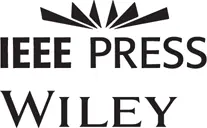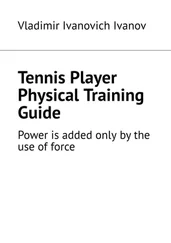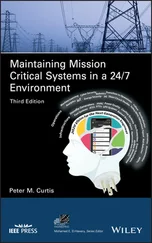Pedro H. J. Nardelli - Cyber-physical Systems
Здесь есть возможность читать онлайн «Pedro H. J. Nardelli - Cyber-physical Systems» — ознакомительный отрывок электронной книги совершенно бесплатно, а после прочтения отрывка купить полную версию. В некоторых случаях можно слушать аудио, скачать через торрент в формате fb2 и присутствует краткое содержание. Жанр: unrecognised, на английском языке. Описание произведения, (предисловие) а так же отзывы посетителей доступны на портале библиотеки ЛибКат.
- Название:Cyber-physical Systems
- Автор:
- Жанр:
- Год:неизвестен
- ISBN:нет данных
- Рейтинг книги:5 / 5. Голосов: 1
-
Избранное:Добавить в избранное
- Отзывы:
-
Ваша оценка:
- 100
- 1
- 2
- 3
- 4
- 5
Cyber-physical Systems: краткое содержание, описание и аннотация
Предлагаем к чтению аннотацию, описание, краткое содержание или предисловие (зависит от того, что написал сам автор книги «Cyber-physical Systems»). Если вы не нашли необходимую информацию о книге — напишите в комментариях, мы постараемся отыскать её.
Cyber-physical Systems: Theory, Methodology, and Applications
Cyber-physical Systems: Theory, Methodology, and Applications
Cyber-physical Systems — читать онлайн ознакомительный отрывок
Ниже представлен текст книги, разбитый по страницам. Система сохранения места последней прочитанной страницы, позволяет с удобством читать онлайн бесплатно книгу «Cyber-physical Systems», без необходимости каждый раз заново искать на чём Вы остановились. Поставьте закладку, и сможете в любой момент перейти на страницу, на которой закончили чтение.
Интервал:
Закладка:
141 142
142 143
143 144
144 145
145 146
146 147
147 148
148 149
149 150
150 151
151 152
152 153
153 154
154 155
155 156
156 157
157 158
158 159
159 160
160 161
161 162
162 163
163 164
164 165
165 166
166 167
167 168
168 169
169 170
170 171
171 172
172 173
173 174
174 175
175 177
176 179
177 180
178 181
179 182
180 183
181 184
182 185
183 186
184 187
185 188
186 189
187 190
188 191
189 192
190 193
191 194
192 195
193 196
194 197
195 198
196 199
197 200
198 201
199 202
200 203
201 204
202 205
203 206
204 207
205 208
206 209
207 210
208 212
209 213
210 214
211 215
212 216
213 217
214 218
215 219
216 220
217 221
218 222
219 223
220 224
221 225
222 226
223 227
224 228
225 229
226 230
227 231
228 233
229 234
230 235
231 236
232 237
233 238
234 239
235 240
236 241
237 242
238 243
239 244
240 245
241 246
242 247
243 248
244 249
245 250
246 251
247 252
248 253
249 254
250 255
251 256
252 257
253 258
254 259
255 260
256 261
257 262
258 263
259 265
260 266
261 267
262 268
263 269
264 270
265 271
266 272
| IEEE Press 445 Hoes Lane Piscataway, NJ 08854 | ||||
| IEEE Press Editorial BoardSarah Spurgeon, Editor in Chief | ||||
| Jón Atli Benediktsson | Andreas Molisch | Diomidis Spinellis | ||
| Anjan Bose | Saeid Nahavandi | Ahmet Murat Tekalp | ||
| Adam Drobot | Jeffrey Reed | |||
| Peter (Yong) Lian | Thomas Robertazzi |
Cyber‐physical Systems
Theory, Methodology, and Applications
Pedro H. J. Nardelli

Copyright © 2022 by The Institute of Electrical and Electronics Engineers, Inc. All rights reserved.
Published by John Wiley & Sons, Inc., Hoboken, New Jersey.
Published simultaneously in Canada.
No part of this publication may be reproduced, stored in a retrieval system, or transmitted in any form or by any means, electronic, mechanical, photocopying, recording, scanning, or otherwise, except as permitted under Section 107 or 108 of the 1976 United States Copyright Act, without either the prior written permission of the Publisher, or authorization through payment of the appropriate per‐copy fee to the Copyright Clearance Center, Inc., 222 Rosewood Drive, Danvers, MA 01923, (978) 750‐8400, fax (978) 750‐4470, or on the web at www.copyright.com. Requests to the Publisher for permission should be addressed to the Permissions Department, John Wiley & Sons, Inc., 111 River Street, Hoboken, NJ 07030, (201) 748‐6011, fax (201) 748‐6008, or online at http://www.wiley.com/go/permission.
Limit of Liability/Disclaimer of Warranty: While the publisher and author have used their best efforts in preparing this book, they make no representations or warranties with respect to the accuracy or completeness of the contents of this book and specifically disclaim any implied warranties of merchantability or fitness for a particular purpose. No warranty may be created or extended by sales representatives or written sales materials. The advice and strategies contained herein may not be suitable for your situation. You should consult with a professional where appropriate. Neither the publisher nor author shall be liable for any loss of profit or any other commercial damages, including but not limited to special, incidental, consequential, or other damages. Further, readers should be aware that websites listed in this work may have changed or disappeared between when this work was written and when it is read. Neither the publisher nor authors shall be liable for any loss of profit or any other commercial damages, including but not limited to special, incidental, consequential, or other damages.
For general information on our other products and services or for technical support, please contact our Customer Care Department within the United States at (800) 762‐2974, outside the United States at (317) 572‐3993 or fax (317) 572‐4002.
Wiley also publishes its books in a variety of electronic formats. Some content that appears in print may not be available in electronic formats. For more information about Wiley products, visit our web site at www.wiley.com.
Library of Congress Cataloging‐in‐Publication Data applied for:
ISBN: 9781119785163
Cover Design and Image: Wiley
Preface
This book has been written as an introductory text to cyber‐physical systems conceptualized as a scientific object in itself. The decision to move in this direction was based on my subjective experience of the objective reality of engineering education and academic research, very often overspecialized and too modular. I tried to go beyond such a reductionist view by making evident the complex articulations that constitute cyber‐physical systems as such, as well as the necessary relations to the external world in which they are – or will be – deployed, being them physical or social. My advise to anyone who wants to learn or teach from this book is (i) to follow the chapters in the order they are presented, (ii) do the proposed exercises, and (iii) keep the mind open to understand the articulation of concepts that define the presented theory. Only in this way, the reader or educator can fully enjoy the strength of the theory as the basis of a methodological framework for practical interventions.
The history of the manuscript is the following. The very first, preliminary version of the manuscript‐to‐be was presented as tutorial notes in the 2017 International Symposium on Wireless Communication Systems in Bologna (Italy). Then, this tutorial text was extended to become the lecture notes of a completely new course I had the freedom to develop at LUT as soon as I moved from the University of Oulu to LUT in 2018; the course is called Introduction of IoT‐based Systems . In 2020, I decided to convert those notes into a real book, which Wiley kindly accepted to publish.
I would like to acknowledge all the colleagues with whom I have discussed topics related to this book that in some way or another have helped to shape it, specially the friends at LUT University (Finland), the University of Oulu (Finland), and the University of Campinas (Brazil). Among those persons some deserve special praise, namely (i) Dr. Hanna Niemelä – an associate professor at LUT – for proofreading the whole manuscript and also giving suggestions, (ii) Arthur Sena, M.Sc. – a doctoral student at LUT – for drawing so many figures and helping me in some technical parts of the book, (iii) Dr. Alysson Mascaro – professor of philosophy of law at the University of São Paulo, Brazil – for guiding my studies in critical Marxist philosophy, in particular Althusser, and (iv) Dr. Harun Siljak – assistant professor of embedded systems, optimization and control in Trinity College Dublin, Ireland – for sharing so many ideas about cyber‐physical systems, cybernetics, and information theory (mostly in a revolutionary way). I would also like to thank Dr. Florian Kühnlenz, who at some point in 2014 talked with me about one of my schematic handmade drafts that were randomly placed on my messy table and a few days later presented to me quite an interesting simulation where he implemented those ideas. This was the beginning of his doctoral research at the University of Oulu, which ended up motivating me to dig into the conceptualization of cyber‐physical systems that is now presented here.
Читать дальшеИнтервал:
Закладка:
Похожие книги на «Cyber-physical Systems»
Представляем Вашему вниманию похожие книги на «Cyber-physical Systems» списком для выбора. Мы отобрали схожую по названию и смыслу литературу в надежде предоставить читателям больше вариантов отыскать новые, интересные, ещё непрочитанные произведения.
Обсуждение, отзывы о книге «Cyber-physical Systems» и просто собственные мнения читателей. Оставьте ваши комментарии, напишите, что Вы думаете о произведении, его смысле или главных героях. Укажите что конкретно понравилось, а что нет, и почему Вы так считаете.












